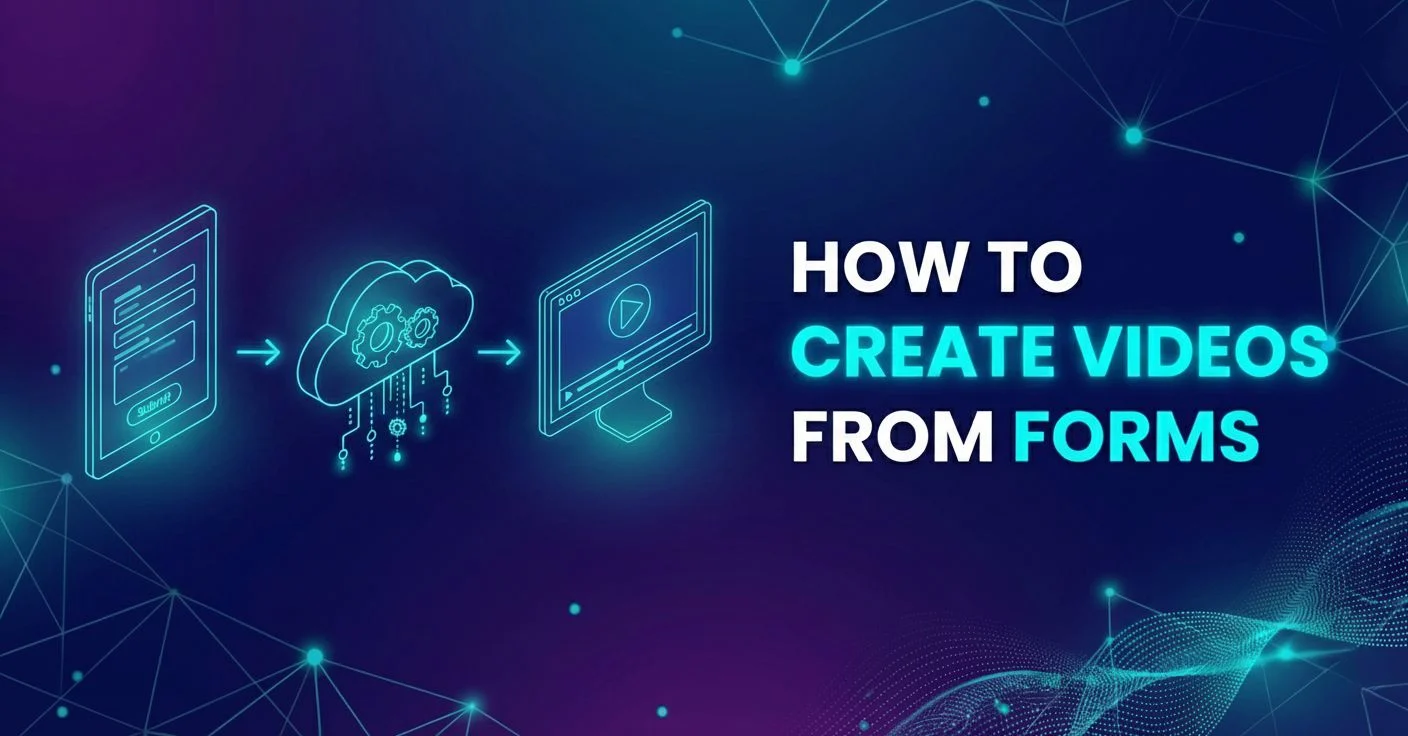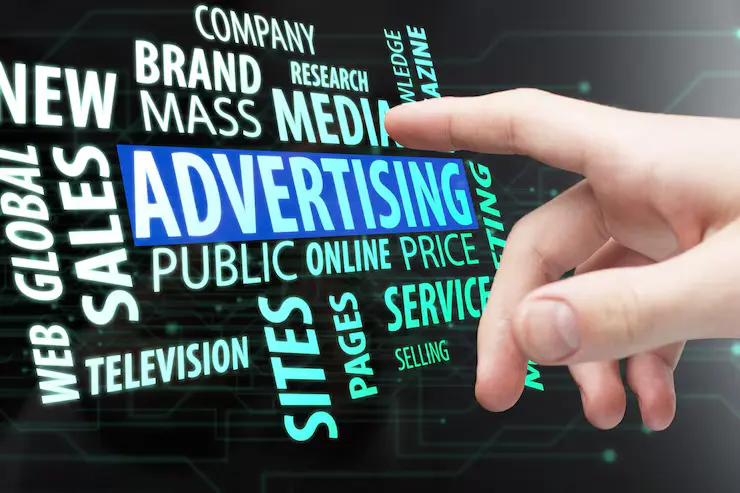How to create personalized videos at scale
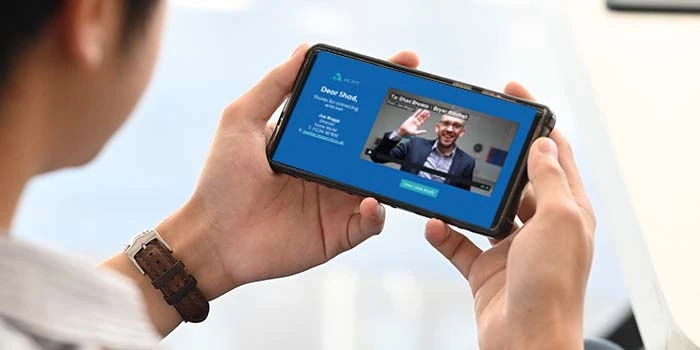
Want to create personalized videos at scale? Well, you’re in luck because nowadays, it’s easier than ever, and it’s changing how brands communicate. In this quick guide, we’ll show you exactly how to build a system that turns one video template into thousands of personalized videos automatically. No fuss, no fluff - just a flawless flow for mass video personalization.
Whether you’re personalizing sales outreach, onboarding flows, or customer updates, scaling this process used to take hours and hours of editing. But now, tools like Plainly Videos make it possible to build a complete personalized video marketing solution, generating hundreds of videos in minutes, all personalized with names, company data, or any variable you need. Sound impressive, right?
You can watch our short video walkthrough on how this system works below.
But for those who like reading through steps, stick around. We’re about to go through the process, step by step.
What is creating personalized videos at scale?
Creating personalized videos at scale translates to using automation to generate unique videos for every individual viewer without editing each one manually. Instead of producing a single, static video, you build a dynamic video template - the one that changes based on your audience data.
This connection between data and creativity is what makes spreadsheet to video so powerful. By linking your audience list or CRM data directly to your template, every video can automatically update with the right name, company, or message - all in just a few clicks. With this approach, every viewer gets a version that feels tailor-made, just for them.
We’ve seen firsthand that this strategy transforms engagement rates. For example, Tapni used Plainly to send thousands of personalized videos to their customers. The campaigns were scaled effortlessly, while every message was unique.
It’s where personalized video marketing meets automation - storytelling at scale, without any roadblocks or manual work. Engaging videos in just a few steps.
Traditional vs. scalable personalized video creation
For years, even decades, personalized video meant editing each video by hand. One name, one message, and one export at a time. This type of video editing works for small campaigns, but falls apart when you need larger campaigns, with hundreds or thousands of video versions. That’s the reality of traditional personalized video creation: great for creativity, but almost painful for scale.
Traditional workflows depend on manual editing tools like Adobe Premiere or After Effects. Every personalization needs a new name tag, a different logo, and a unique voiceover, which means another render. It’s time-consuming, prone to error, and nearly impossible to maintain consistency across hundreds of outputs.
Scalable personalized video creation, on the other hand, flips that process completely. We still use After Effects to create templates, but instead of manually editing, you create one dynamic template and let automation handle the rest. Tools like Plainly connect your AE video template with real-time audience data from a CSV file, CRM, or API, and then automatically render each version based on input data, so each video is tailored to individual viewers.
From what our clients have to say, this approach doesn’t just save time - it redefines what’s possible. You can launch campaigns with mass video personalization, where every recipient receives a video that feels made just for them. That’s exactly what we mean when we say you can create personalized videos at scale.
Here’s a comparison table of the two approaches:
So, traditional workflows might give you control, but scalable workflows give you results. And if your goal is to create personalized videos at scale and clone one master creative with custom details, automation is the only practical path ahead.
Step-by-step guide on how to create personalized videos at scale
That said, now that you understand the difference between traditional and scalable video creation, it’s about time you set up your own system. And the good news? To start, you only need three things:
- A video template,
- A data source with personalization fields, and
- A tool like Plainly to automate rendering.
In the text below, we’ll use a CSV file to personalize videos as an example. But you can also connect CRMs, databases, or other tools directly through integrations or the Plainly API. It’s this flexibility that makes video personalization at scale so powerful. You can just go ahead and plug it into any workflow you already use. So, let’s go over the process step by step.
Create your video template
Before you do anything else, you’ll need an After Effects project that’s ready for dynamic updates. Why After Effects? Because it’s the industry standard - a tool with such power and flexibility. This template will serve as the foundation for every personalized version you generate later on.
First, add the Edit prefix to each layer you plan to update via your merge fields to videos. For example, your text layer might be named editPrice, or your color layer editColor, like in the picture below.
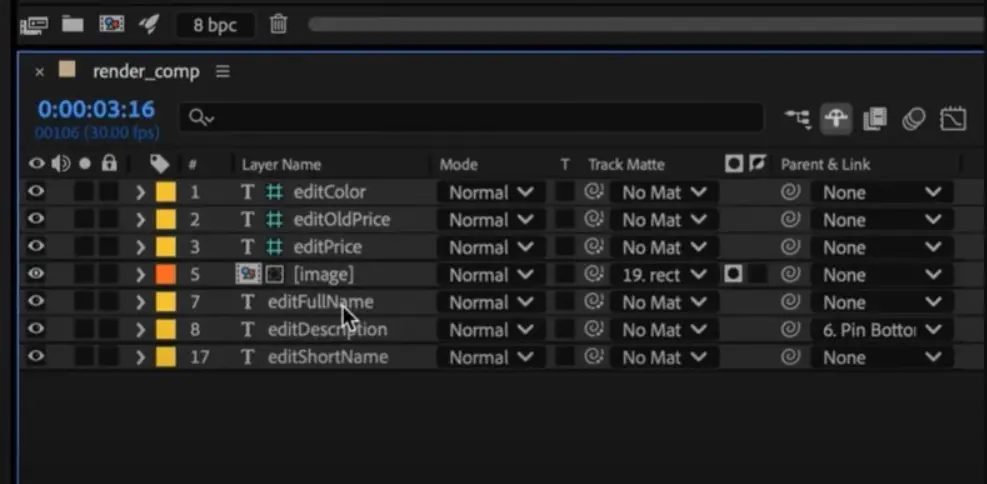
But why do we need this prefix? Glad you asked! Because it tells Plainly exactly which layers should be replaced with data from your CSV, spreadsheet, or connected database. Once those fields are mapped out, the platform automatically swaps the layer content for each row of data, no manual editing needed.
Make sure your layout is clean, responsive, and consistent across all compositions. If you’re preparing multiple versions, the bulk video editor (AE in this case) helps you make quick adjustments to multiple layers or elements before you start scaling.
When your template setup looks good, just zip your entire After Effects project, including all linked assets and keep it on hand for upload in the next step.
Upload your template to Plainly
Now that your After Effects .zip project file is ready, upload it directly to Plainly. This serves as a bridge between your creative file and the automation engine that will handle rendering multiple video versions. Let’s go through the upload together.
- Upload your template - Click Upload project and drag and drop your AE .zip file into the field. Name it, add details, and click Upload. Plainly then scans your project and lists every layer in your render compositions.

- Auto-generate your template - Click Auto-generate, then choose the Prefix option. Type in the prefix you used earlier (which is Edit in our example) to tell Plainly which layers should be dynamic. This automatically generates your template and maps all editable layers that will change in your versions later on.

- Review and adjust - After generation, open Parametrize layers to view all available elements from your project. In here you can sort by layer type (text, image, video, audio, colors, or control effects) and fine-tune which ones will update dynamically.

- Add advanced rules (optional) - For even more control, you can use Layer scripting to apply automation rules like crop, extend, or shift. These nifty options let you customize how each layer responds to your data when generating personalized videos.
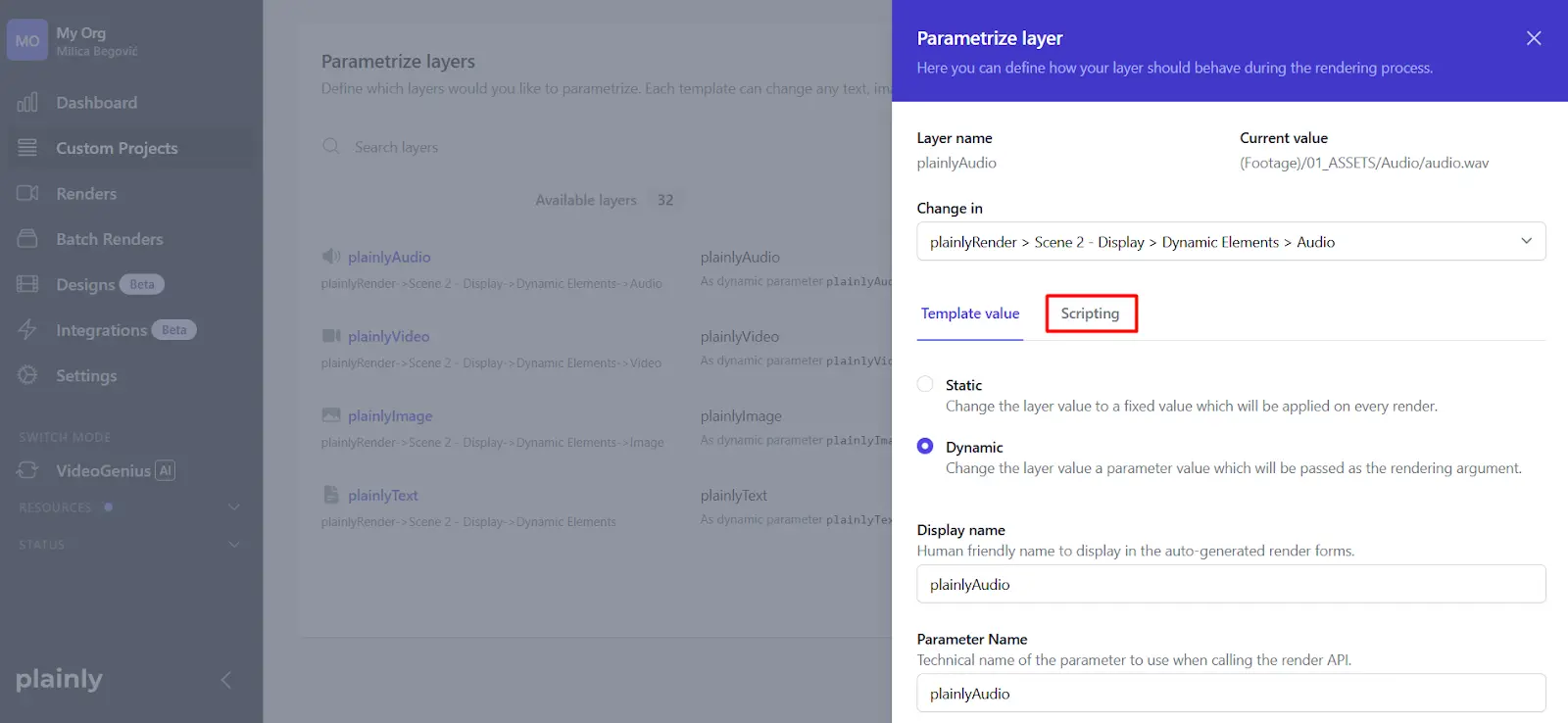
Now that your dynamic layers are set, save your configuration. Your template is now connected and ready to handle video personalization at scale, and all this from a single upload.
Prepare and import your user data
The next step is to connect your video with real audience data. You can use a CSV file or, again, integrate your CRM, Google Sheets, or marketing database directly through Plainly. Each row represents one video, and each column matches a variable in your template. So, you should name the columns the same as your dynamic/parametrized layers, like in the image below.
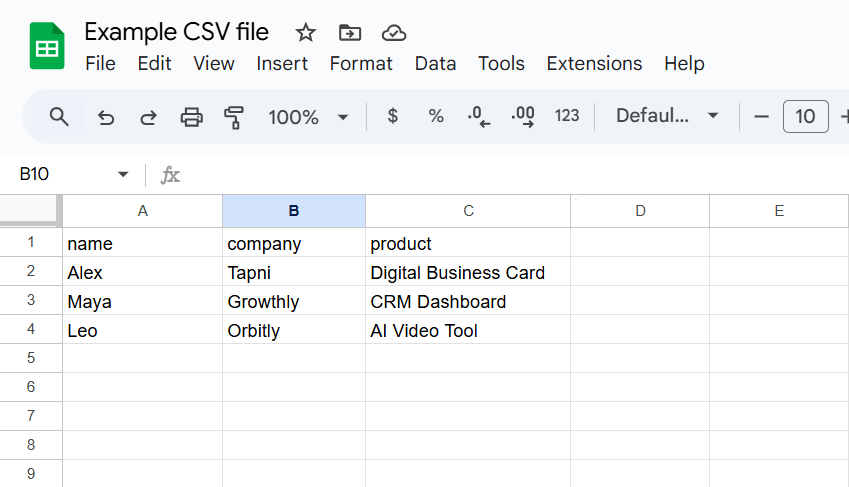
The preparation is done, so now it’s time to batch render from a CSV file. And this is exactly how to do it.
- Go to Plainly’s Batch renders and hit New batch from CSV.
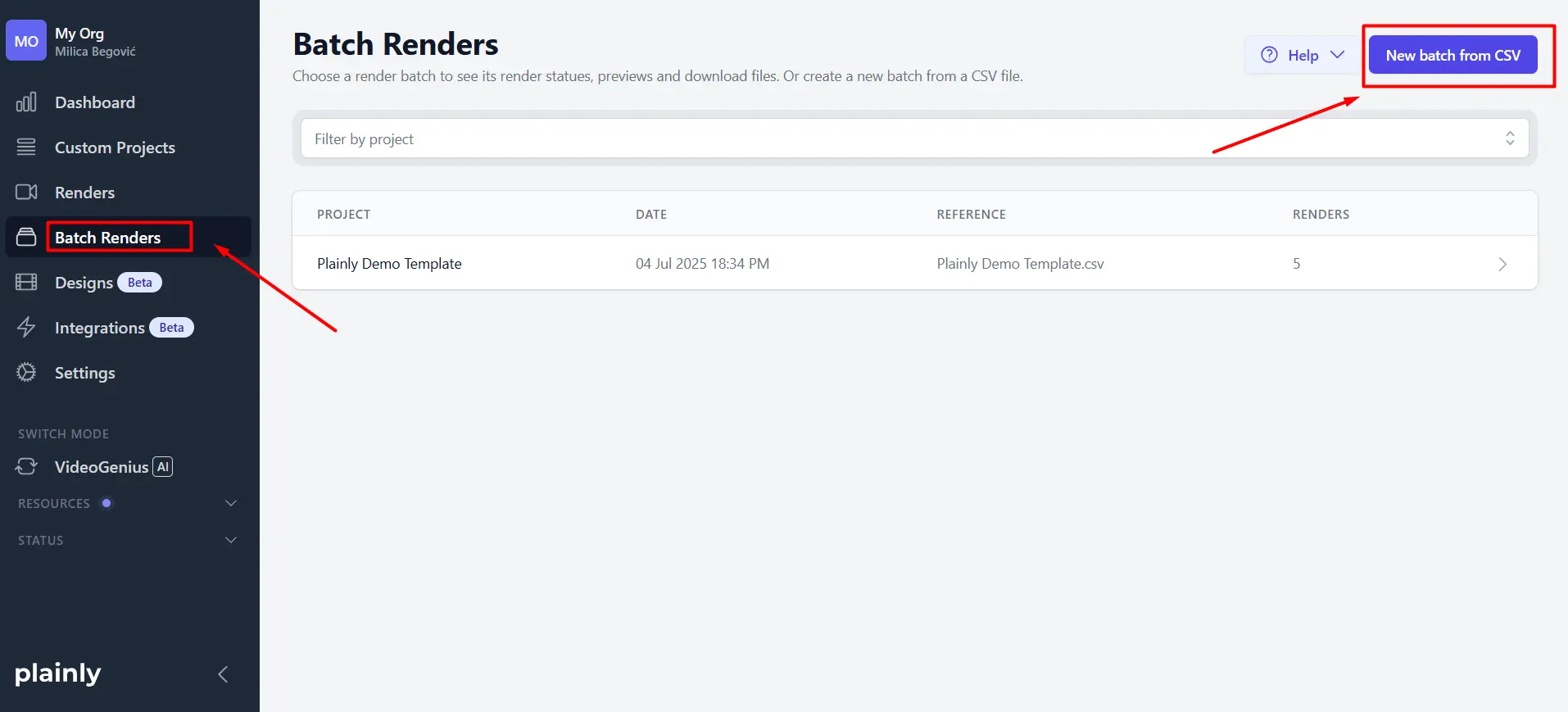
- Now upload the CSV file.
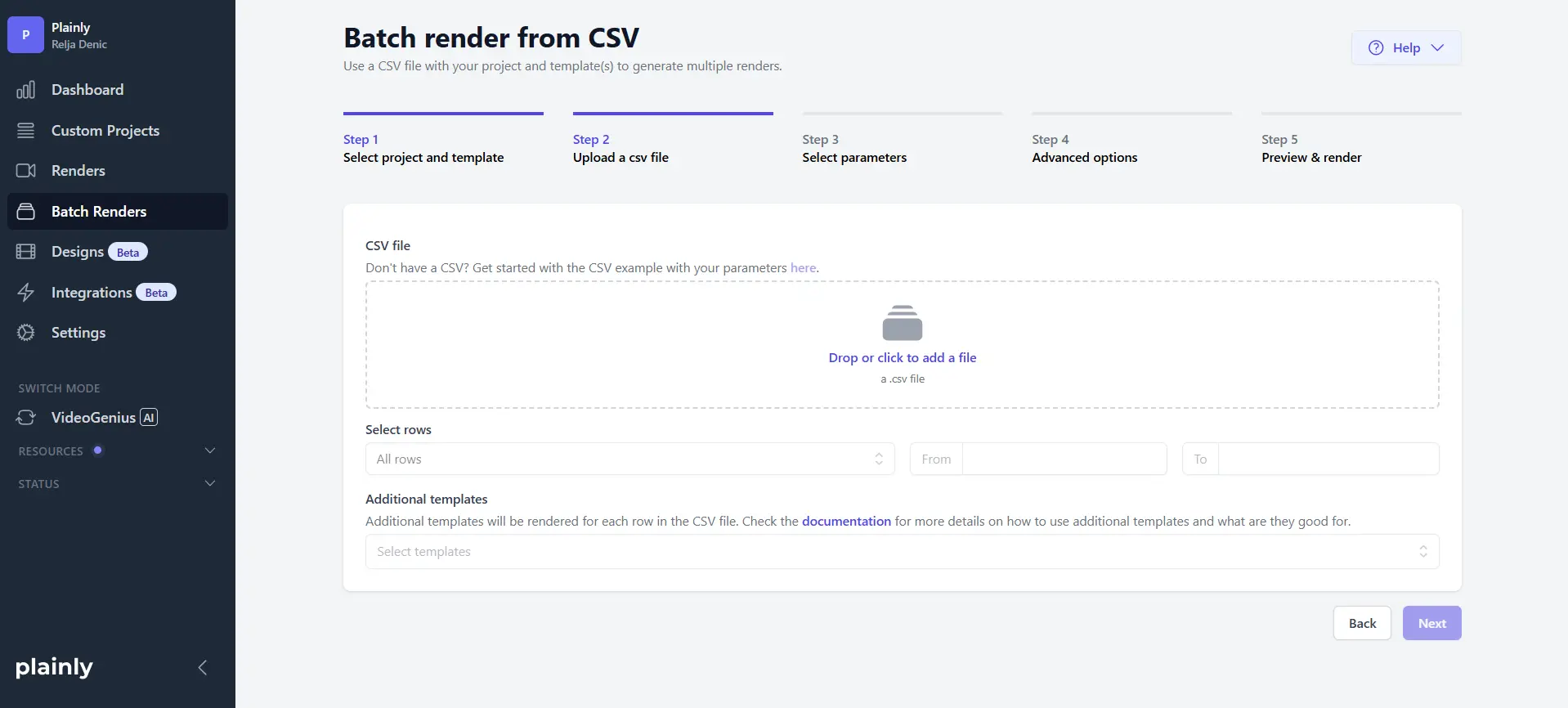
- Now we’re selecting parameters, and by hitting the Auto link button, Plainly will automatically map your data to the right dynamic layers, so you don’t have to match variables manually. You can, but with this magic button, you don’t have to - this is exactly why we named our columns the same as layers.
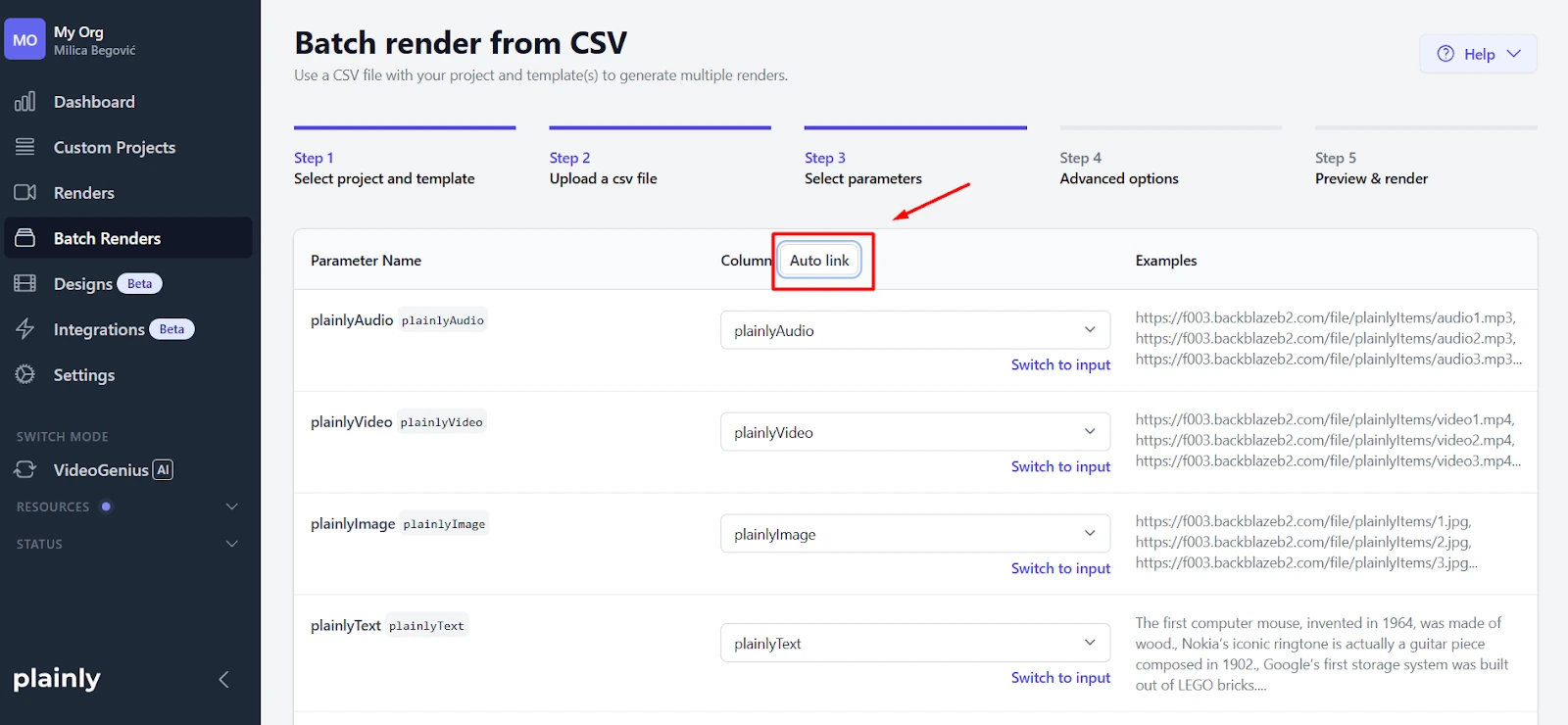
- Lastly, you can use any of the advanced options available, from captions, thumbnails, to output format and watermarks. It all depends on your idea for your campaign.

Render your personalized videos at scale
Now that the data is linked, this is the part where automation takes over. Plainly will now generate all personalized versions automatically after you hit Render.
Under the hood, Plainly uses After Effects automation, so you get the same professional quality and flexibility that production studios rely on, but scaled to thousands of videos.
So let’s go back to Plainly. Once you’re done, hit Render.

Rendering usually takes a few minutes, and then just hit Batch download your videos for glory!
Each video is rendered from your original template, personalized with unique viewer data from your CSV file, and downloaded to your machine. But, if you want it stored in your preferred format or cloud destination, you can also set that up via Plainly’s integrations. It’s the simplest way to turn one creative idea into a mass video personalization campaign that actually scales.
Distribute your videos automatically
Now that your videos are ready, you can deliver them to prospects directly through automation. Plainly integrates with tools like Zapier, Mailchimp, Slack, or any custom API, which allows you to upload or send each personalized video via email or an in-app message.
That means you can build fully automated campaigns from data import to personalized video delivery without writing a single line of code. Sound great, doesn’t it?
For example, you can:
- Trigger video generation from a form submission.
- Automatically email the final video to each user.
- Upload it to your Dropbox or Google Drive for safekeeping and use it afterward
This is what true video personalization at scale looks like: creative, automated, and measurable.
Ready to scale your video production?
Now that we have gone through the process, you know you don’t need a production team or endless editing sessions to create videos that feel personal. We’ve learned that a single After Effects template, your audience data, and Plainly can build a fully automated workflow that turns one idea into thousands of unique videos. And the best part is that each one is customized to the person watching.
We’ve seen brands and our clients use this setup to transform how they communicate: personalized onboarding videos, product updates, and campaign launches. All of them were generated automatically and delivered in minutes. That’s what we call a win, don’t you agree?
If you’re ready to bring the same efficiency and creativity to your workflow and scale your video production, there’s one logical first step to take → Start your free trial or book a demo with Plainly today!
Because, as you can see, scaling video personalization doesn’t have to be complicated at all. It just needs the right system in place. So what are you waiting for? Go scale your video production and thank us later.


